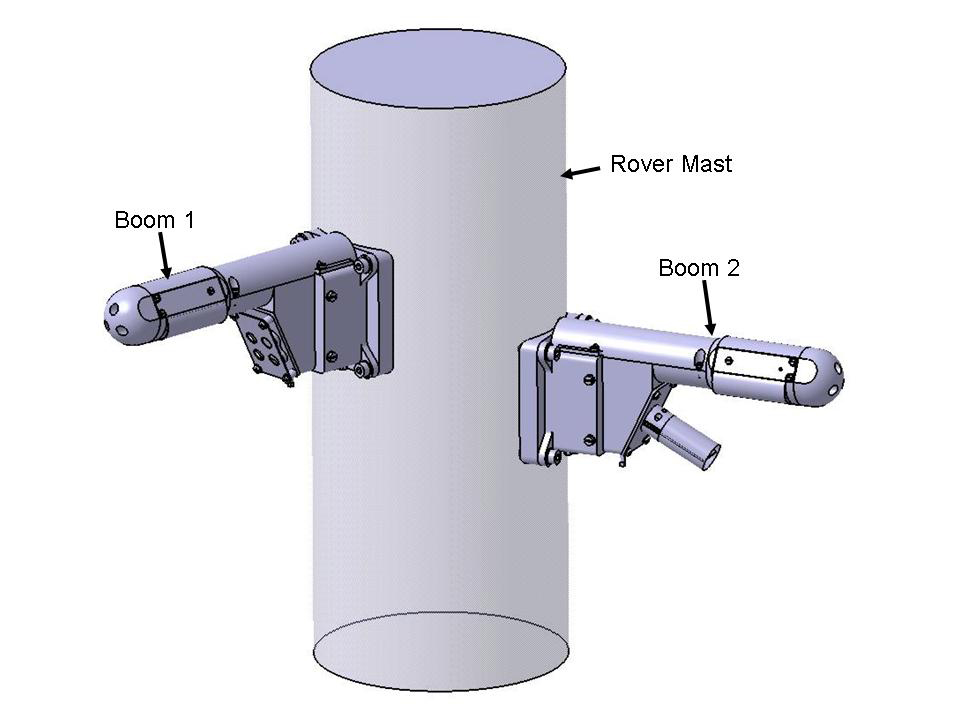
| Rover Environmental Monitoring Station (REMS) | ||||||||||
|
The Centro de Astrobiologia (CAB), a joint center of Consejo Superior de Investigaciones Cientificas - Instituto Nacional de Tecnica Aeroespacial (CSIC-INTA), is providing a weather monitoring station contributed by the Spanish government and to be carried by the Mars Science Laboratory rover.
The Rover Environmental Monitoring Station will measure and provide daily and seasonal reports on atmospheric pressure, humidity, ultraviolet radiation at the Martian surface, wind speed and direction, air temperature, and ground temperature around the rover. Two small booms on the rover mast will record the horizontal and vertical components of wind speed to characterize air flow near the Martian surface from breezes, dust devils, and dust storms. A sensor inside the rover's electronic box will be exposed to the atmosphere through a small opening and will measure changes in pressure caused by different meteorological events such as dust devils, atmospheric tides, and cold and warm fronts. A small filter will shield the sensor against dust contamination. A suite of infrared sensors on one of the booms (Boom 1) will measure the intensity of infrared radiation emitted by the ground, which will provide an estimate of ground temperature. These data will provide the basis for computing ground temperature. A sensor on the other boom (Boom 2) will track atmospheric humidity. Both booms will carry sensors for measuring air temperature. An array of detectors on the rover deck that are sensitive to specific frequencies of sunlight will measure ultraviolet radiation at the Martian surface and correlate it with changes in the other environmental variables. |
||||||||||

